Afforestation vs Reforestation
- August 23, 2024
- 0 comment
Forests are the lungs of our planet, playing an essential role in maintaining ecological balance. They provide habitat for countless species, regulate the water cycle, and sequester carbon dioxide from the atmosphere. Healthy forest ecosystems are crucial for sustaining biodiversity, supporting livelihoods, and combating climate change. However, with the rapid deforestation occurring worldwide, the importance of restoring and expanding these vital ecosystems has never been greater.

Two primary strategies have emerged to address the loss of forests: afforestation and reforestation. While both practices aim to increase forest cover, they differ in their methods and objectives. Afforestation involves planting trees on land that has not previously been forested, whereas reforestation focuses on restoring forests that have been degraded or destroyed. Understanding the distinction between these two approaches is crucial for implementing effective environmental conservation efforts.
Relevance of Practices in Combating Climate Change and Degradation
Afforestation and reforestation are powerful tools in the fight against climate change. Both practices contribute to carbon sequestration, enhance biodiversity, and improve soil health. As the world grapples with rising temperatures and increasing environmental degradation, the strategic application of these practices offers hope for a more sustainable future.
Table of Content
- What is Afforestation?
- What is Reforestation?
- Key Differences Between Afforestation and Reforestation
- Environmental and Societal Impacts
- Challenges and Considerations
- FAQs
What is Afforestation?
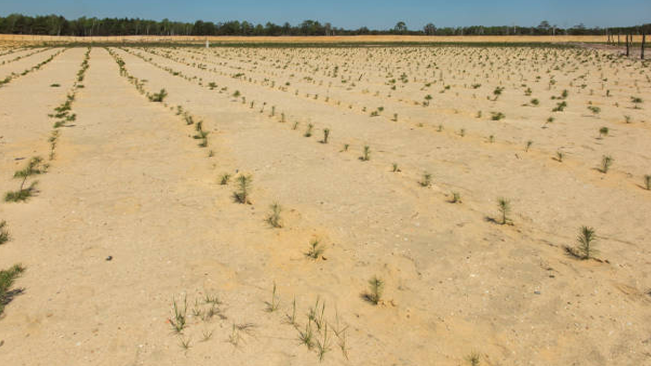
Definition of Afforestation
Afforestation refers to the process of planting trees on land that has not been previously forested. This practice aims to create new forested areas in regions where forests did not naturally exist, transforming barren or marginal lands into thriving ecosystems.
Historical Context and Modern Initiatives
Historically, afforestation efforts were often driven by the need to combat desertification, improve soil quality, and provide timber resources. In recent decades, afforestation has gained prominence as a strategy for mitigating climate change. Countries like China, India, and Brazil have launched large-scale afforestation projects to increase forest cover and reduce carbon emissions.
Examples of Successful Afforestation Projects Worldwide
One notable example of successful afforestation is China’s “Great Green Wall” initiative. This project, which began in the 1970s, aims to combat desertification in the Gobi Desert by planting millions of trees. Another example is the Indian state of Andhra Pradesh’s ambitious effort to plant over 50 million trees to combat soil erosion and improve water retention.
Key Benefits and Challenges of Afforestation
Afforestation offers numerous benefits, including carbon sequestration, soil stabilization, and the creation of new habitats for wildlife. However, it also presents challenges. Planting non-native species can disrupt local ecosystems, and afforestation on agricultural land can lead to conflicts over land use. Additionally, the success of afforestation efforts depends on careful planning, ongoing maintenance, and community involvement.
What is Reforestation?
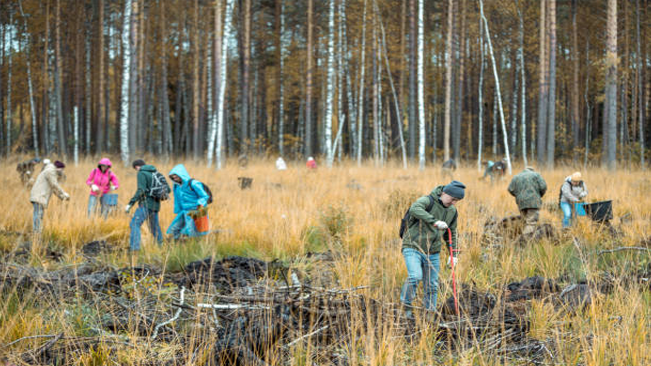
Definition of Reforestation
Reforestation involves the replanting of trees in areas where forests have been cut down or degraded. Unlike afforestation, reforestation focuses on restoring forests that once existed but have been lost due to activities such as logging, agriculture, or natural disasters.
Importance of Reforestation in Restoring Degraded Forests
Reforestation is a critical strategy for reversing environmental degradation. By restoring native forests, reforestation helps to revive ecosystems, protect biodiversity, and improve the quality of air and water. Reforestation also plays a vital role in combating climate change by enhancing carbon storage and reducing greenhouse gas emissions.
Key Benefits and Challenges of Reforestation
Reforestation offers significant ecological and societal benefits, including improved biodiversity, enhanced ecosystem services, and increased carbon sequestration. However, reforestation faces challenges such as the high cost of tree planting, the need for long-term maintenance, and the potential for conflicts over land use. Successful reforestation requires careful planning, community engagement, and a commitment to maintaining the restored forests.
Key Differences Between Afforestation and Reforestation
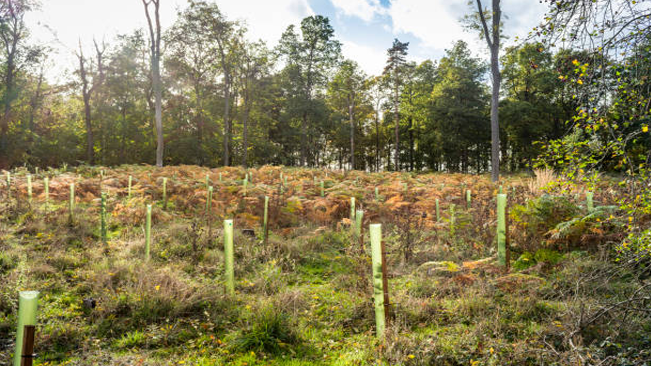
Purpose and Objectives
The primary difference between afforestation and reforestation lies in their objectives. Afforestation aims to create new forests on lands that have not been forested before, while reforestation focuses on restoring forests that have been lost or degraded. Both practices contribute to increasing forest cover, but their purposes differ based on the ecological context and land use history.
Ecological Impacts and Outcomes
Ecologically, afforestation and reforestation have different impacts. Afforestation introduces trees to new environments, which can significantly alter local ecosystems. In contrast, reforestation seeks to restore the natural balance of ecosystems that have been disturbed. Reforestation generally has a more immediate positive impact on biodiversity, as it involves reintroducing native species to their original habitats.
Differences in Implementation Strategies
The implementation strategies for afforestation and reforestation also differ. Afforestation often requires selecting suitable tree species for non-forested land and managing potential conflicts with existing land uses, such as agriculture. Reforestation, on the other hand, involves restoring degraded land, which may require additional efforts to rehabilitate soil and manage invasive species.
Long-Term Sustainability Considerations
Both afforestation and reforestation have long-term sustainability considerations. Afforestation projects must ensure that the newly planted forests are resilient and can thrive in the long term. Reforestation efforts must focus on restoring the natural ecological processes of the original forest. In both cases, ongoing monitoring, community involvement, and adaptive management are essential for long-term success.
Environmental and Societal Impacts

Positive Impacts on Biodiversity, Carbon Sequestration, and Soil Health
Afforestation and reforestation contribute significantly to environmental sustainability. Both practices enhance biodiversity by providing habitats for various species, sequester carbon dioxide, and improve soil health. These efforts also help mitigate climate change by capturing carbon from the atmosphere and storing it in trees and soil.
Economic Benefits to Communities and Industries
The economic benefits of afforestation and reforestation extend to local communities and industries. These practices create jobs in tree planting, forest management, and eco-tourism. Additionally, they can generate income through the sustainable harvesting of timber and non-timber forest products. Reforestation, in particular, can revitalize degraded lands, making them more productive for agriculture and other land uses.
Potential Risks and Unintended Consequences
Despite their benefits, afforestation and reforestation can have unintended consequences. For example, planting non-native species in afforestation projects can disrupt local ecosystems. Similarly, reforestation efforts may lead to the displacement of local communities or conflicts over land use. Addressing these risks requires careful planning, stakeholder engagement, and the application of best practices.
Challenges and Considerations
Land Availability and Competition with Other Land Uses
One of the major challenges for both afforestation and reforestation is the availability of suitable land. Afforestation projects often compete with agriculture, urban development, and other land uses. Reforestation efforts may face similar challenges, particularly in areas where land is scarce or highly valued.
Social and Cultural Considerations
Social and cultural considerations are crucial for the success of afforestation and reforestation initiatives. Local communities must be involved in the planning and implementation of these projects to ensure that they align with cultural values and social needs. Failure to do so can lead to conflicts, resistance, and the failure of the project.
Policy Frameworks and Funding Mechanisms
Effective policy frameworks and funding mechanisms are essential for supporting afforestation and reforestation efforts. Governments and international organizations must create policies that incentivize sustainable forest management and provide funding for tree planting, maintenance, and monitoring. Public-private partnerships can also play a key role in financing large-scale initiatives.
Monitoring and Maintenance Requirements
Finally, the long-term success of afforestation and reforestation depends on ongoing monitoring and maintenance. Newly planted forests require care to ensure that they are established successfully and continue to grow. This includes protecting young trees from pests, diseases, and human activities. Regular monitoring is also needed to assess the ecological impacts and make necessary adjustments.
Frequently Asked Questions (FAQs)
1. What is the difference between afforestation and reforestation?
Afforestation involves planting trees on land that has not previously been forested. In contrast, reforestation focuses on replanting trees in areas where forests have been degraded or destroyed.
2. Why are afforestation and reforestation important?
Both practices are critical for combating climate change, restoring ecosystems, enhancing biodiversity, and improving soil and water quality. They also contribute to carbon sequestration, helping to reduce greenhouse gas concentrations in the atmosphere.
3. What are some successful examples of afforestation?
Notable examples include China’s “Great Green Wall” initiative, which aims to combat desertification, and India’s large-scale tree planting campaigns to improve soil health and water retention.
4. How does reforestation benefit degraded forests?
Reforestation restores ecological balance by reintroducing native tree species, improving habitat for wildlife, and reviving essential ecosystem services like water filtration and soil stabilization.
5. What are the key challenges associated with afforestation?
Challenges include selecting suitable species for new forests, ensuring long-term survival of trees, and avoiding ecological disruption. Additionally, afforestation may compete with other land uses like agriculture.
6. What are the key challenges associated with reforestation?
Reforestation can be costly and requires a long-term commitment to tree maintenance. Challenges also include dealing with invasive species, degraded soils, and land use conflicts.
7. How do afforestation and reforestation help mitigate climate change?
Both practices sequester carbon dioxide from the atmosphere by capturing it in trees and soils. This reduces the concentration of greenhouse gases, helping to mitigate global warming.
8. Can afforestation or reforestation cause environmental harm?
If not carefully planned, afforestation can introduce non-native species that disrupt local ecosystems. Reforestation might lead to conflicts over land use or unintended consequences for local communities.
9. How can local communities benefit from these practices?
Afforestation and reforestation can provide jobs, enhance livelihoods through sustainable forestry, and improve local environmental conditions, making land more productive and resilient.
10. What is needed to ensure the success of afforestation and reforestation projects?
Success requires careful planning, selection of appropriate tree species, long-term maintenance, community involvement, and supportive policy frameworks. Monitoring and adaptive management are also crucial to address challenges as they arise.

Gilbert Griffin
Forestry AuthorGilbert Griffin is a forest management expert specializing in sustainable practices, forest health, conservation, and land management. With extensive knowledge in pest control, disease management, and habitat restoration, Gilbert develops strategies to preserve forest ecosystems and biodiversity. Passionate about the natural world, Gilbert adapts to changes in forest management and stays updated through continuous learning. Gilbert also provides seasonal advice to optimize forest care throughout the year.

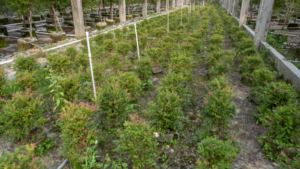
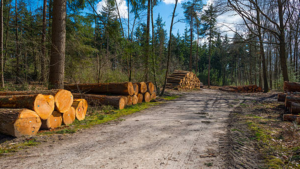
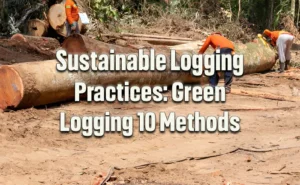

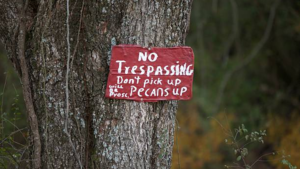





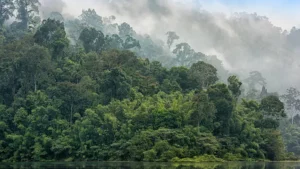

Leave your comment